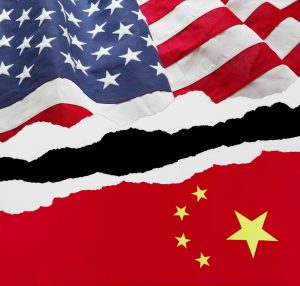Although in the last five or six years there seems to have emerged a so-called new consensus on China within the United States, particularly following the 2017 Trump administration’s National Security Strategy report, in reality there are still major disagreements with regard to how to define China, how to compete with or confront China, and what issues should be prioritized. Perhaps the only consensus among the various U.S. institutions is to “get tough on China,” even though what exactly the term “tough” means is very unclear.
For instance, the new Biden administration is quietly preparing to end the Trump administration’s unsuccessful trade war with China, but Washington still does not have a clear sense of where the trade relationship between the two largest economies in the world should be going. This example is one of many moves in U.S. China policy that only prove that the United States ultimately does not have a coherent and consistent China strategy and policy. There are three major reasons for this.
The first reason stems from the unique U.S. political system, especially its endless elections. Every four years brings the chance of a new U.S. administration, and a new resident personality in the White House will mean a unique approach. Former President Donald Trump may be the most extreme case of a policy change associated with an individual president, but rest assured that he will not be the last unique president in U.S. history. This simply is a result of the U.S. presidential system, where too much power is given to the president.
To cite another recent example, the Trump administration put a heavy emphasis on the trade imbalance issue in the China-U.S. relationship, whereas the Biden administration chose to stress the importance of climate change and human rights issues in the relationship. It is striking how the trade issue is getting so little attention today, whereas two years ago newspapers were filled with it. When things like this happen, how can we expect a coherent and consistent U.S. policy toward China?
Besides the tumultuous presidential elections, there are also the midterm elections and local elections, which together make U.S. politics more eventful or even chaotic sometimes. Even within the same administration, policies are constantly changing to respond to the domestic political environment. There are pros and cons to this system, but one thing is clear: It’s difficult for policies to be coherent and consistent when there are so many variables and uncertainties.
The second reason is the divided nature of U.S. domestic politics. Even putting aside party polarization, Wall Street, the Pentagon, state capitals, Main Street, and the U.S. Congress all have different views toward China. Sometimes their views might converge on certain themes, but most times their priorities differ widely due to their self-interests. State governments might be actively seeking Chinese investment or trade even as Congress seeks to tighten restrictions on such activities. Wall Street might want to increase high-tech exports to China, while the Pentagon sees this as a security threat. These interests are in constant conflict and competition, meaning it’s hard to even talk about a singular “China policy” in the first place.
The last reason involves the lack of clear definition of China in the U.S. China policy debate. What is China, exactly, to the United States? Is it a friend, foe, competitor, rival, adversary, or simply a significant country in the world? To be fair, this question is almost impossible to answer given the very complex nature of China-U.S. relations in the last four decades. Today, China-U.S. ties involve almost all aspects of important bilateral relationships, such as commercial exchanges, security issues, technology trade (as well as competition), values, and global and local issues. Different interest groups within the United States would give different answers as to how to frame the relationship, therefore making a coherent narrative of China very difficult, if not impossible.
Rapid developments within China also complicate this issue. It is hard enough for experts within China to understand it as every three to five years there seems to be a new business model, for example. It is even more difficult for U.S. experts to effectively make sense of China, not to mention that not many U.S. experts actually read Chinese materials nowadays. There are probably 300 to 400 million Chinese people who can read and understand basic English newspapers, whereas number of people who can read Chinese in the U.S. is much smaller. Even though these days AI technology can help translate most materials instantly, a deeper understanding of any country or culture would require years or decades of soaking in that culture, as anthropologists would tell us.
Given the constraints above, we do not expect the Biden administration to be able to form a coherent strategy toward China even within the United States. And it is mission impossible to form a globally coherent attitude toward China, which would be exponentially more complicated.
The Chinese system, however, has a head start in crafting a long-term and coherent strategy toward the United States, evidence by the 14th Five-Year Plan just passed earlier this year. The long-term competition between the two powers, partially, will be determined whose strategy is wiser and more coherent. On this regard, the United States has a long way to go.

































